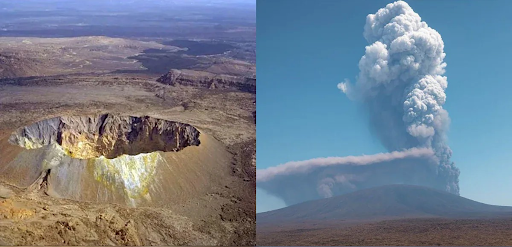Description
Copyright infringement not intended
Source: CNBC TV18
Context
According to a CEEW study, 57% of Indian districts are at risk of excessive heat, which affects 76% of the population. Rising humidity and warm nights exacerbate the situation.
Heatwaves, Heat Stress, and Heat Risk
|
Concept
|
Details
|
|
Heatwaves
|
Prolonged periods of abnormally high temperatures in a specific region; no universal definition.
|
|
Heat Stress
|
Occurs when body temperature exceeds 37°C. Body struggles to release excess heat, leading to:
- Discomfort
- Cramps
- Exhaustion
If body temperature exceeds 40°C, it may cause heat stroke.
|
|
|
|
|
|
Heat Risk
|
As per CEEW, it refers to the probability of heat-related illness or death due to extreme temperatures.
|
|
Heat Risk Factors
|
1. Heat Intensity & Compounding Effects (e.g., humidity)
2. Degree of Exposure
3. Vulnerability of affected communities (age, health conditions, etc.)
|
Key Factors Increasing Heat Risk in India
- Between 2012 and 2022, more than 70% of Indian districts had five or more very warm nights per summer.
- Warm evenings prevent the body from cooling down after a hot day, raising the risk of heat stroke and exacerbating noncommunicable disorders such as diabetes and hypertension.
- The relative humidity of the Indo-Gangetic Plain increased from 30-40% (1982–2011) to 40-50% (2012–2022).
- High humidity reduces sweating, which increases heat stress, especially when the body temperature surpasses 37°C.
- Cities with dense populations, such as Mumbai and Delhi, endure higher levels of exposure.
- Rapid urbanization in tier II and III cities has resulted in higher nighttime temperatures due to heat-absorbing concrete infrastructure.
- The districts of Andhra Pradesh, Maharashtra, Haryana, Punjab, Chhattisgarh, Bihar, and Uttar Pradesh are particularly vulnerable.
- A large proportion of the population is old, and chronic health issues such as diabetes and hypertension are common.
Heat Action Plan (HAPs)
- There are considerable gaps in India's HAPs, with many lacking long-term measures to mitigate excessive heat.
- The Sustainable Futures Collaborative's investigation found that existing plans were not being implemented effectively.
- Such planning inadequacies may result in a rise in heat-related mortality as heat waves become more common and extreme.
Source: Indian Express
Practice Question:
Q. With reference to the increasing frequency of extreme heat events in India, consider the following statements:
- Heatwaves are declared in India when the maximum temperature exceeds 40°C in the plains.
- Extreme heat has a direct impact on agriculture, particularly the yield of wheat and rice.
- The National Disaster Management Authority (NDMA) has issued guidelines for heatwave action plans in India.
- Urban heat islands are primarily caused by industrial emissions alone.
Which of the statements given above is/are correct?
A) 1 and 2 only
B) 1, 2 and 3 only
C) 2 and 4 only
D) 1, 2, 3 and 4
Answer:
B) 1, 2 and 3 only
Explanation:
- Statement 1: Correct. The India Meteorological Department (IMD) declares a heatwave when the temperature exceeds 40°C in the plains.
- Statement 2: Correct. Heat stress significantly affects agricultural productivity, especially of wheat and rice crops.
- Statement 3: Correct. NDMA has issued guidelines and encouraged states to implement heatwave action plans.
- Statement 4: Incorrect. Urban heat islands are caused by multiple factors including concrete surfaces, lack of green cover, and heat absorption—not just industrial emissions.
|










